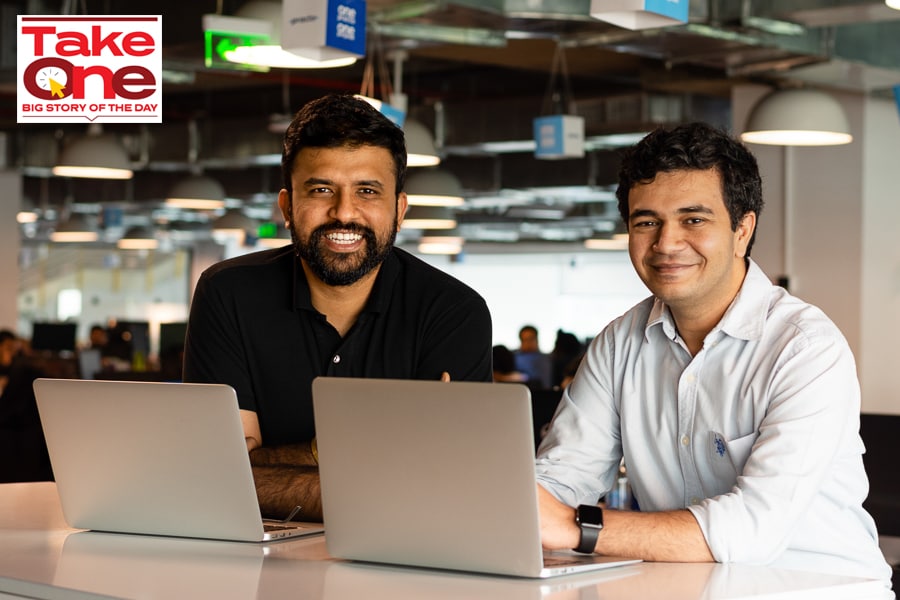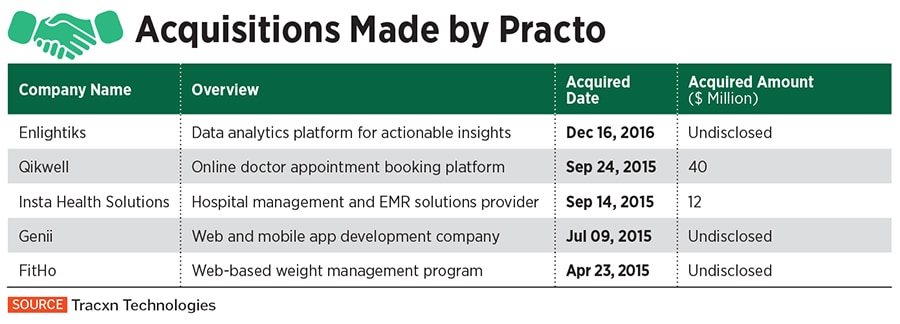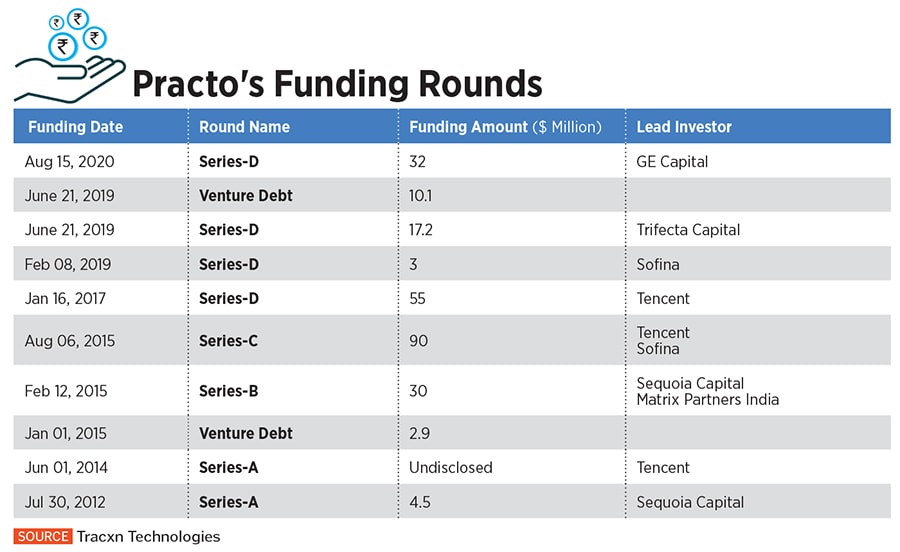Kalpana V, a Practo user, found herself in need of a doctor for her child at a time when she was in a village near a coastal area. There was a cyclone and rain, and going to a doctor in the closest town would have been difficult. Practo, an app for finding and consulting with doctors, came to her aid. Kalpana’s internet connection was sketchy so she got a call on her phone instead by a doctor, and she got a prescription as well, she wrote in her review of the app, in November last, on Google’s Play store.
Anecdotes like Kalpana’s are less uncommon today in India after the Covid-19 pandemic pushed millions of people to seek doctors online, from the safety of their homes. One of the less commonly known shifts is that people also sought help for mental illness more willingly than they had previously, Abhinav Lal, co-founder and chief technology officer at Bengaluru’s Practo, tells Forbes India in a recent interview.
“India is going through this revival of our understanding that a lot of health issues are inter-connected,” Lal says. And Practo, which offers various health services under the same brand name, is doubling down on making itself the go-to online platform for people to take a holistic approach to their health, rather than seek doctors in an episodic manner, Lal explains.
From a large number of appointment bookings online for consultations offline, Practo saw a “massive shift” towards online consultations. The investments it had made until then allowed it to do multiple things. One, Practo had the systems built out to handle surge in demand. For the calendar year 2020, tele-consultations jumped by 3x over the previous year. During the lockdown months, the peak demand was 10x. Practo had 175 million unique users, Lal and co-founder and CEO Shanshank ND said in a blog post in November.
Second, there was an increase in the number of doctors getting online. Practo now has more than 25,000 doctors providing online consultations. The company created an ‘academy’ to train these doctors on how online consultations are done.
And third, Practo had built the technology to offer real-time appointment bookings. People can get on the Practo app, look for a doctor, check her schedule and book an available slot directly. Some of the doctors use Practo’s software to manage their calendars, but Practo also integrates with third-party software to aggregate information on doctors’ availability—and Practo can auto-assign a suitable doctor in an on-demand process.
A smaller line of business comprises at-home diagnostics and medicine delivery, which is complementary to the doctor-consultation, but not core to Practo’s business. The software stack that Practo has built, meaning the software to handle these different needs, is the largest in the country, Lal says.
A significant portion of the fund raise that Practo has done so far has gone into building these technologies. That’s what allows Practo to differentiate itself. The company has raised about $230 million in ten rounds of funding. Acquisitions have also brought in some of the technologies Practo offers, such as the hospital information management system from Insta Health Solutions, which it acquired in 2015.
![practo acquisitions practo acquisitions]()
Today, about 20 million people use Practo every month, Lal says. Its bookings for offline consultations are still focused on the top seven cities in India, but Practo is expanding this and expects to reach about 30 cities over the next few quarters. On the online consultation front, people from about a 1,000 cities and towns have used Practo over the last year, he says.
Practo has also come to the fore at a time when people are looking for reliable medical information and shifting from managing specific health-related incidents to a more continual approach. This means that they need to store historical information about their illnesses, the medicines they took and so on. Practo is encouraging and helping people to look at their health care needs in a more holistic manner, Lal says.
Initiatives announced by the government are also helping. For example, there is now a national digital health mission, a plan to create a unified health ID, and a plan for a federated health record system. This will be similar to what the unified payments interface did for digital payments in the country, he adds.
Just as UPI has made digital payments almost ubiquitous, “we are seeing similar early signs around health data,” Lal adds, with the policy initiatives coming at a time when demand for better health care processes is rising from consumers as well as doctors. Covid-19 pushed the government also to accelerate the adoption of these plans.
When Covid-19 happened, Practo organised a series of webinars for doctors in India to talk to doctors in China and understand what was happening and how they could deal with it, since the pandemic started earlier in China.
An example of how people are seeking help in a broader manner is the increase in consultations around mental health. On Practo’s platform, there was 300 percent increase in consultations for mental health last year, Lal says.
The acceptance of mental illness as something that one ought to talk about and seek help for is a big shift, Lal explains. A significant proportion of the consultation bookings came from smaller cities and towns he says. People are beginning to realise that it’s just as valid to seek a doctor for depression as it is for diabetes.
Building Technologies
To accelerate this process, Practo is looking at how technologies like artificial intelligence and machine learning can augment the capacity and capabilities of doctors. Health care is very human-centric, and the quality and empathy that a doctor offers in a consultation is as relevant as the medicine she prescribes, and has a very big impact. AI is a long way away from replacing human doctors. On the other hand, AI and machine learning can make a significant dent in solving problems like the very poor doctor-patient ratio that India has. “If you look at anything beyond the top seven cities, it is abysmal,” Lal says.
Therefore, India needs its existing doctors to be able to manage many more patients each. This is where technology can play a role by helping to augment the doctors capacity and capabilities. This involves capturing data that an AI programme can then process to give insights back to the doctors in real time, on things that they might miss.
Practo is already doing some rudimentary work in this area, providing prompts to doctors on questions they could ask, and suggesting medicines they could prescribe.
Today, healthcare is very interventional in India, meaning people seek help when there is an episode of illness or an emergency. The number of times Indians visit doctors is two to three times a year, based on Practo’s data. In the advanced economies, it is 10 visits or more. This doesn’t mean that people there are less healthy, but that they are more proactive about seeing doctors, Lal says. AI and ML can equip India’s overall health infrastructure to both intervene early—with lifestyle diseases growing rapidly—and reach out to people more often. “We aren’t doing any work in this area yet, but it is certainly one direction in which we would like to expand Practo’s capabilities,” Lal says. “Augmenting doctors’ ability to handle more patients without compromising on quality.”
A recent product that Practo has launched is ‘Practo Plus,’ a subscription that offers a variety of services to both individuals and to corporate businesses. A pilot was launched last year and a more full-fledged product was launched recently. There has been good traction on the retail side, but also “exciting” uptake among corporate businesses, Lal says, but didn’t want to name any customers yet. This allows Practo to design a “seamless health care experience” for employees of those companies.
Practo’s online consultation platform, the telemedicine product, is another area that the company will invest more in, as it bridges the gap between a patient in a faraway small town and a specialist doctor in a metro. For example, the product is currently only available in English, and Practo is working on making the app available in multiple Indian languages. “That’s a huge market and the awareness is growing,” Lal says.
Another area of ongoing development is to improve the quality of the outcome from a consultation. Here, Practo is not only trying to bring more experienced doctors onto its platform, but is also building systems for its in-house medical team to anonymously audit any given consultation. And the data is readily available especially with online consultations, while patient privacy is protected by anonymising the data.
This allows Practo to figure out which doctors and what kind of treatments are most effective for any given illness and then turn that knowledge into ‘protocols’ that can be made available to all the doctors. It also helps improve patient safety, Lal says, by checking if a doctor is asking the right kind of questions, getting into the level of detail needed before proceeding further and so on.
Practo has a framework for figuring out “what makes a good consultation a good consultation”, but Lal didn’t want to provide further details as it is proprietary to the company.
![practo funding practo funding]()
“Fix the Plumbing First”
Practo also allows people to use it to store their electronic health records, and this in fact is how the venture started, 12 years ago. CEO Shashank ND, while still in engineering college, once had to go from hospital to diagnostic centre, collecting paper-based records for his father’s knee surgery. After college, he and Abhinav started Practo, then called Naabo Medical Solutions, with a cloud-based clinic management software called TurboDoc. It was later rebranded as Practo Ray.
The pivot to the consumer space happened in 2013-14 as the duo realised that they needed to “fix the plumbing first,” meaning they had to make it easy for people to access doctors first and for their health data to flow easily “in a continuum” and not in patches, Lal says.
Practo embarked on the mammoth task of actually mapping out every single health care provider in city after city, starting with Bengaluru. Practo staff went road by road capturing the location of every hospital, clinic, diagnostic lab, and so on, and Practo built the software backend to digitise that data, including location coordinates.
Over a period of time, Practo built the software to ‘gamify’ the process allowing individual staff members to use their smartphones, go to a location, add location markers, images and so on, and earn points. Then followed the task of capturing the doctors’ credentials and verifying those credentials. Practo built software for this as well, figuring out all the specialisations out there, and the necessary education and training qualifications for each of those specialisations.
The company open-sourced the effort where any doctor could provide feedback on qualifications that were valid or accepted by medical experts. And Practo put together an in-house team of medical experts which would cross verify and validate the information. “That allows Practo to say very confidently that today if a doctor claims to practice something on Practo, you can rest assured that it’s 100 percent verified.” The company has done this for over a 100,000 doctors, Lal says.
The company is present in 21 countries today through its enterprise software, whereas the consumer software is India-focussed. Practo saw 180 million people using it last year. While the cloud software brings subscription revenue, on the consumer front, Practo collects a fee for online consultations.
A Junior VC, an online site that focuses on the venture capital and startup scene in India, estimated Practo’s annual revenue at around $30 million by 2020. In comparison, Practo had revenue of SGD 14.5 million ($11 million) for the fiscal year 2017-18, according to data collected by Tracxn Technologies, which tracks information on startups worldwide.
The company isn’t profitable yet, but may not be too far from it either. Shashank and Lal said in a November blog that gross margin had risen to 35 percent in FY20 from 10 percent in FY18. And Practo is reaching the kind of scale it needs to start turning profitable. An IPO, however, could be three to four years away, Avnish Bajaj, founder and managing director at Matrix Partners India, tells Forbes India in an interview. Matrix first invested in Practo in its series-B round.
Practo launched its telemedicine product in 2015, supporting audio, video and chat using which patients and doctors can connect. Over the next five years, it was about tweaking the technology, the model, creating awareness, waiting for clarity on the regulations around using app-based virtual consultations and so on. And Covid-19 provided the tipping point.
“Sectors like health care or education are double-bottom-line sectors where you are also trying to do good while building a business,” Bajaj says. “It is very important to invest in founders who have a mission.” It was too early when they started, because the rest of India needed to catch up. For example, it was only after Jio Infocomm offered cheap mobile data that millions of people were able to really get on the internet in a meaningful way.
In India, health care is a sector that requires at least some support from the government. There isn’t an Aadhaar card of health care, for instance. Or the use of the DigiLocker isn’t very widespread yet, where useful information can be stored and made available as needed. The private sector can’t do much in such areas beyond a point, Bajaj says.
The government’s plans, therefore, are vital. “We are very excited about the digital health mission, which is being tested in some of the union territories right now. It should help propel digital health records forward. And as data becomes more available, we will see some very interesting use cases being solved in the Indian ecosystem,” Lal says.





